Equipment &
Resources
On this page you can learn a little about what equipment I use my current imaging set up. I’ll also have additional resources on various blogs, astronomy forums, and recommendations for equipment. There will also be a separate section where you can learn more about the imaging prcocess iteself.
Telescope
My telescope is an Explore Scientific 127 ED (extra-low dispersion) Apochromatic (APO). This means, that the telescope itself uses a five inch (127mm) objective lens to refract the light into focus. This telescope is also known as a triplet in that it uses three air-spaced lenses to ensure there is no chromatic aberration, misalignment of color wavelengths, when producing images.
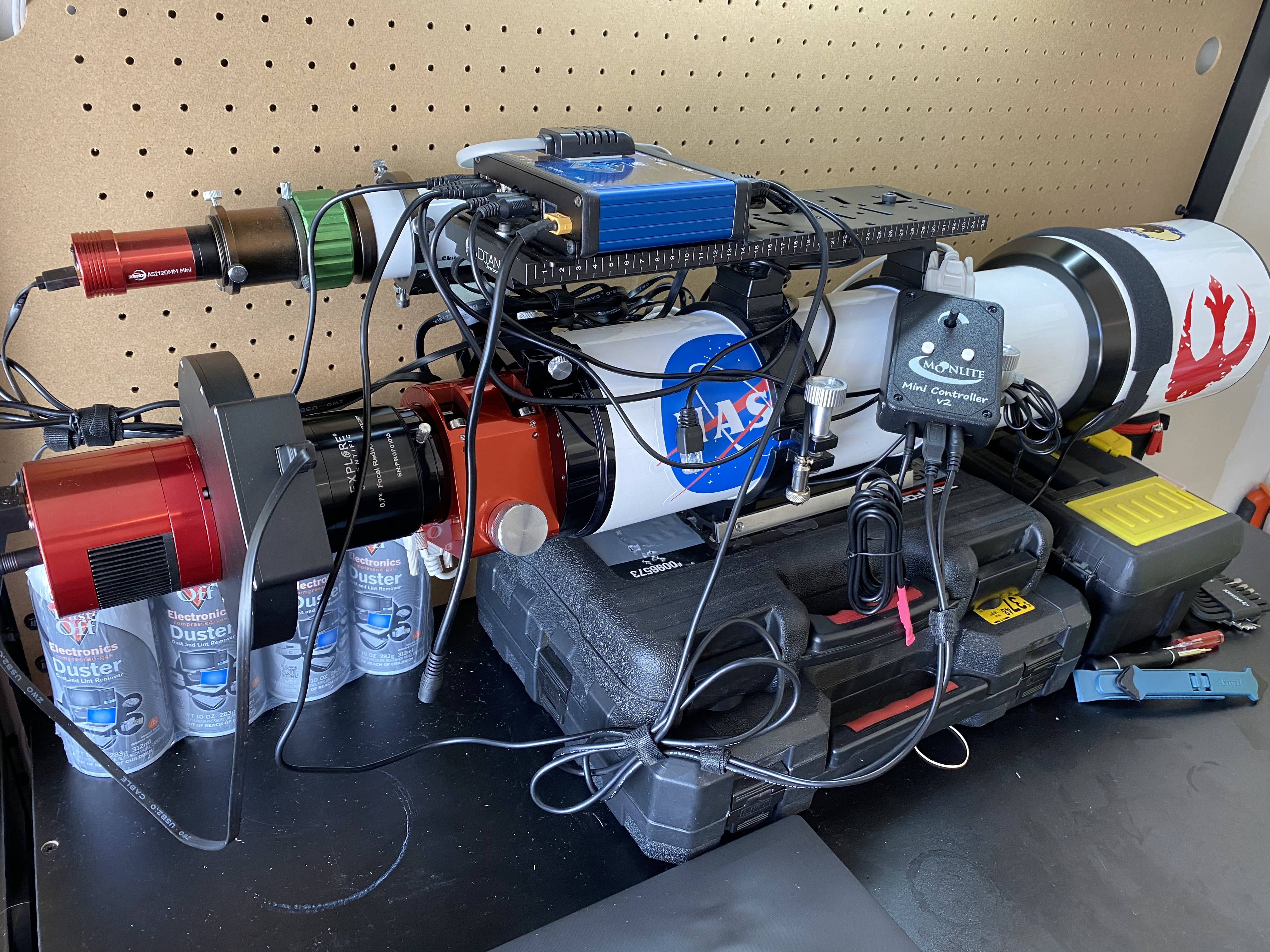
For many astrophotographers this model would fit well in the middle tier of refactor telescopes. There are many higher-end models both in size and make that go up astronomically (pun intended) in price.
Over time I have made a few modifications to it including upgrading the focuser from a manual to fully electronic MoonLite focuser as well as included the Explore Scientific .7x Focal Reducer/Field Flattener (FR/FF). The FR/FF provides two benefits, firstly it helps increase the overall field of view that I can capture with this telescope and secondly, it provides a flat field image. A notorious issue with refractors is that due to the shape of the lenses stars around the edges of images often appear stretched and the flattener corrects for that.
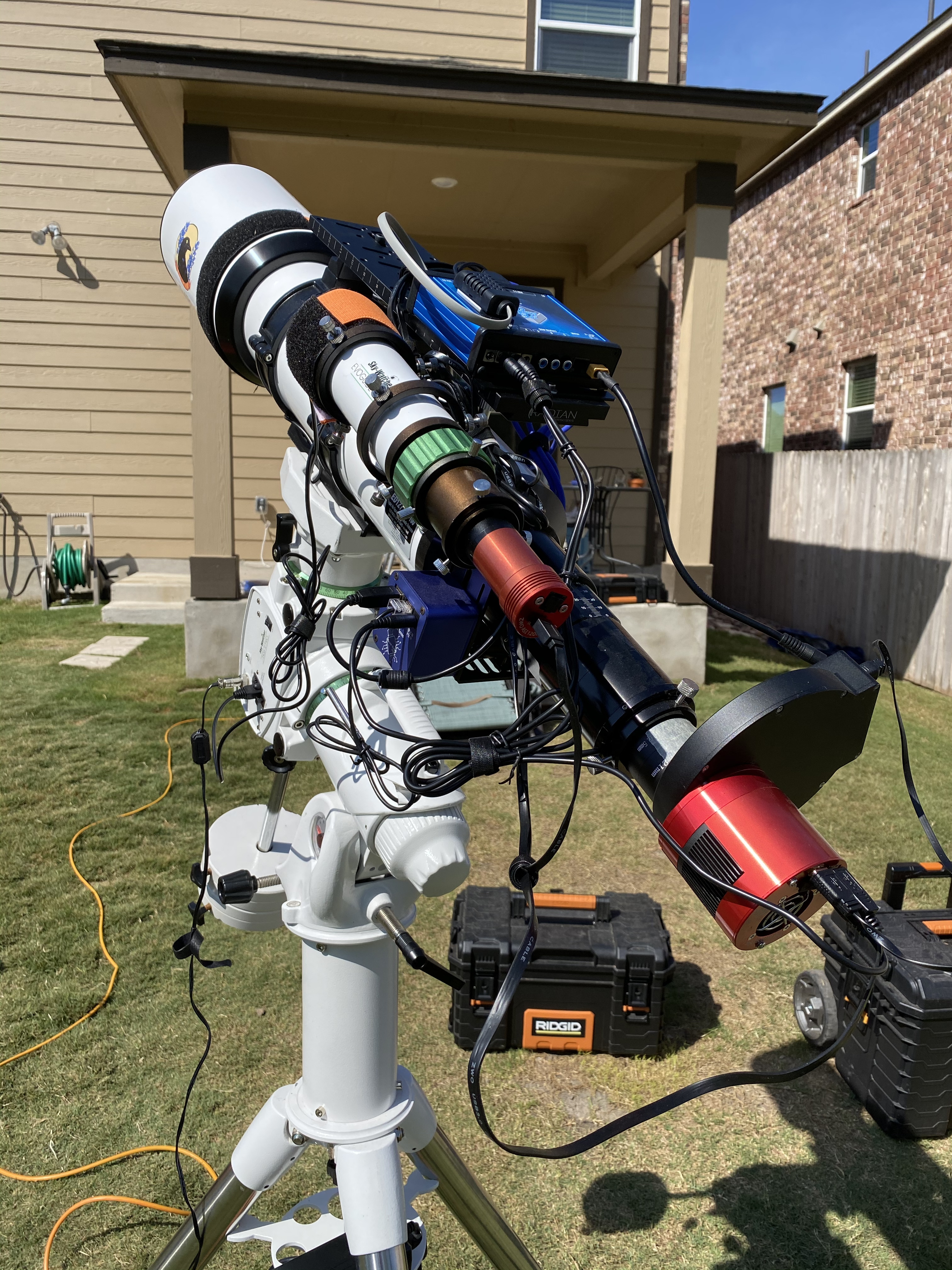
Mount & Guiding
One of the key requirements for imaging, and astronomy in general, is to be able to point, find, and track an object across the sky. This requires an electronic mount and guide scope. For my mount I use the Sky-Watcher EQ6-R Pro which has great stability and accuracy while able to handle a fair payload. Attached to the primary telescope itself is my guide scope the Sky-Watcher Evoguide 50mm doublet and in it the guide camera, the ZWO ASI 120 mono. When used in conjunction with software on my computer I can ensure that the mount stays pointed accurately and traces the object I’m imaging across the sky.
Cameras
When I began imaging I started, like many astrophotographers, with a DSLR. Many of the initial projects in my gallery are done with the use of my Canon Rebel T3i. DSLRs are a great camera to use when learning the how-tos of imaging. And, it’s not very hard to find a used one at a relatively easy price point. I also took some extra steps to “astro modify” my T3i which basically means that I had to take the thing apart and remove some of the stock filters to ensure that the camera sensor can capture the full spectrum of light.
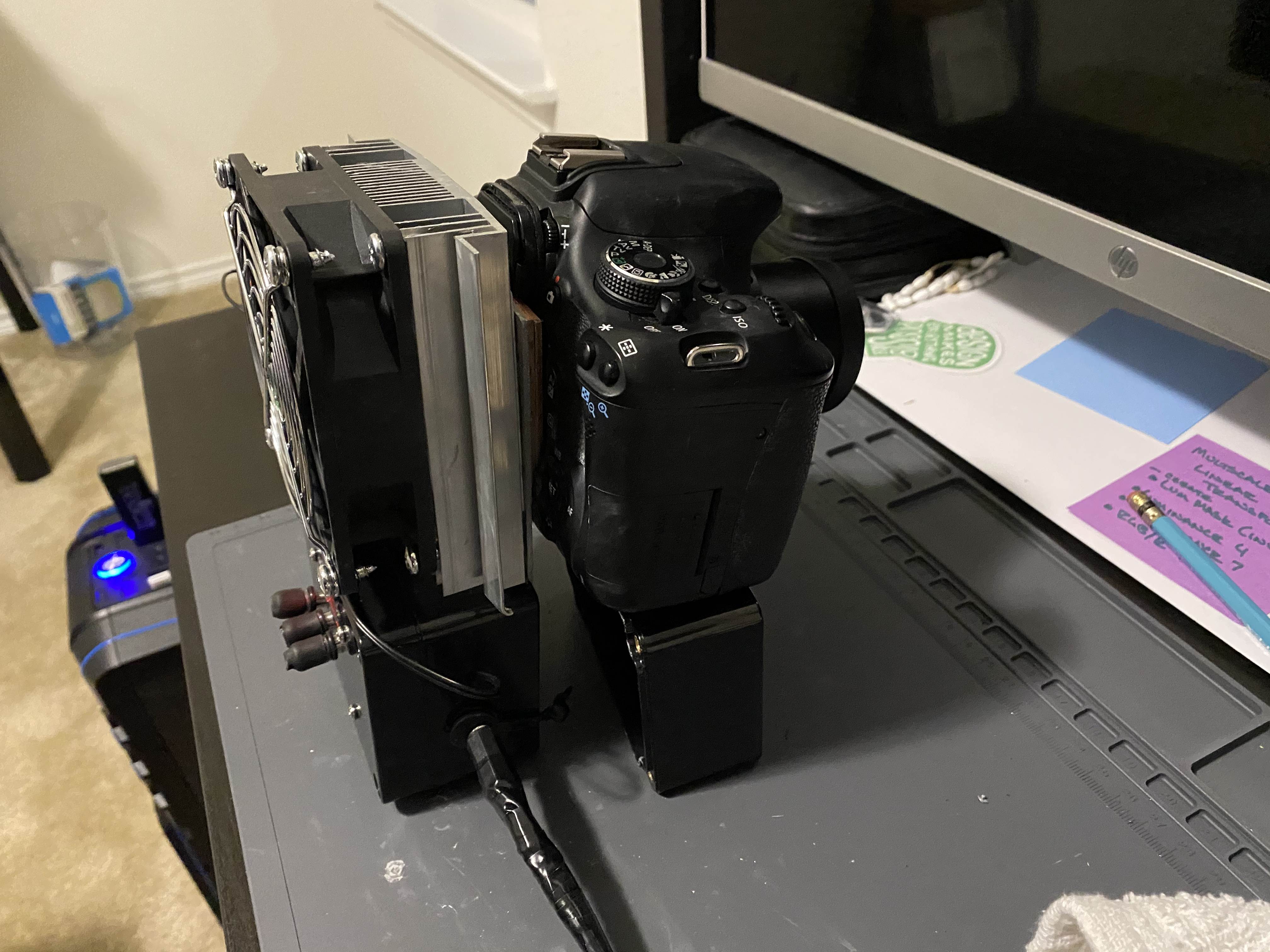
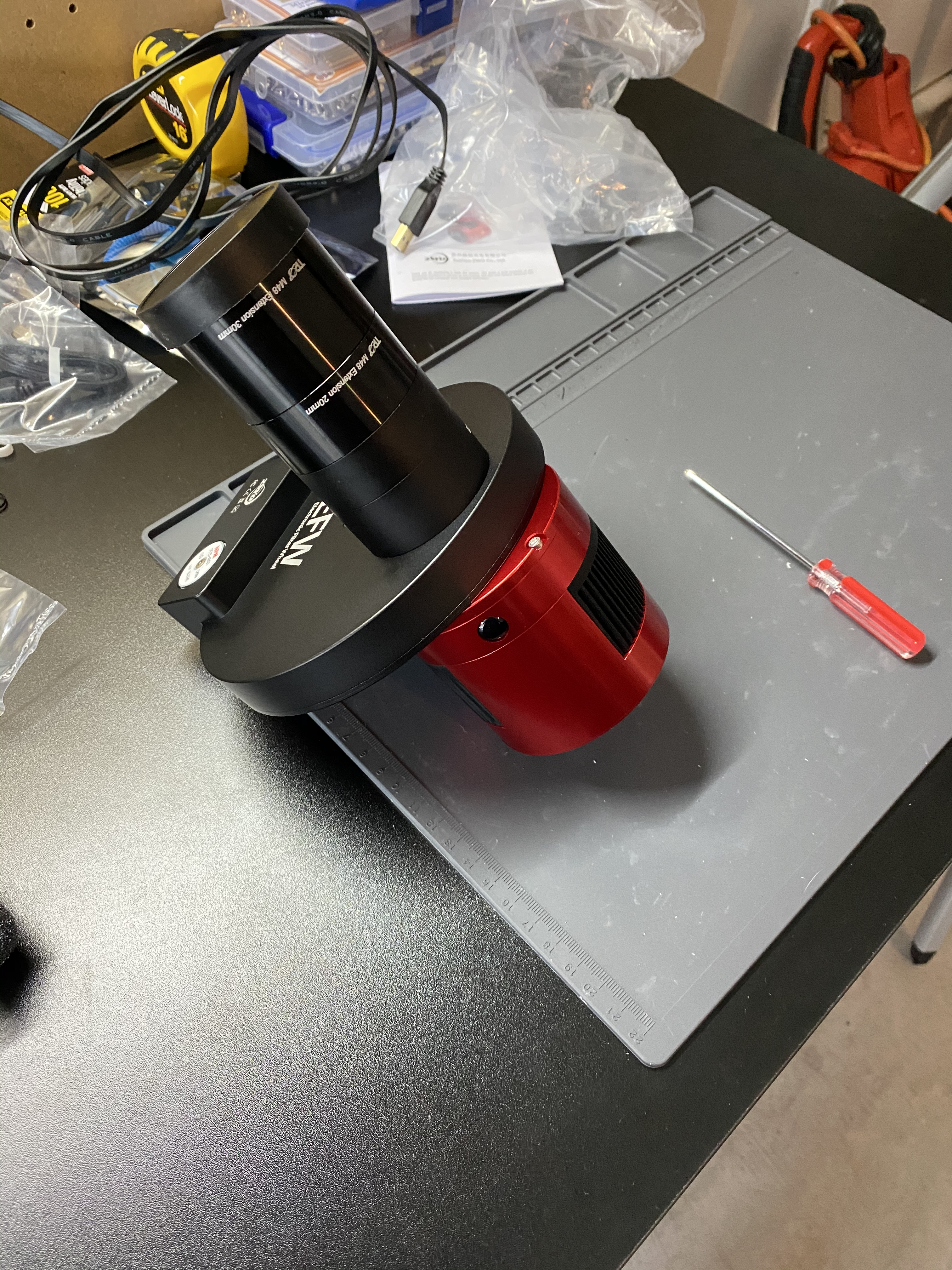
Since this spring, I began using a dedicated camera for my imaging projects using the ZWO ASI 1600 MM Pro. This camera uses a CMOS sensor (the same type used in DSLRs), but the advantages are that it has a built-in cooling system that allows you to better manage the temperature of the sensor. Cooling of the senor is important because when taking long exposure images, the sensor gets hot which introduces noise. By being able to cool the camera you can better manage noise reduction.
The 1600 is as a monochrome camera which means that it only images in black and white as opposed to a traditional one shot color (OSC) camera. Imaging in mono creates interesting trade-offs in that you get three times the detail from mono compared to an OSC image, but to produce a color image it requires three time the work. When working with mono cameras, the user must image using different filters to generate a color image. For example, with an OSC I can image a galaxy in one go, but with mono, I’d need to image it once with a red filter, then with blue, then with green to create the composite image.
Filters
Filters are an astrophotographer’s best friend. There are many different kinds of filters available for use, but it basically boils down to two main types broadband and narrowband. Broadband filters capture large swathes of the light spectrum such as luminance, red, green, and blue wavelengths. Narrowband filters do right the opposite they are great for cutting out light pollution and imaging in very narrow slivers of the light spectrum. This is most commonly used for Hydrogen alpha (Ha), Oxygen 3 (Oiii), Sulfur 2 (Sii).
The two main brands that I use Optolong and Chroma.
- Optolong L-Pro – broadband light pollution filter, used for the DSLR and ASI 1600
- Optolong L-eNhance – this is a tri-band narrowband filter for my DSLR
- Chroma Luminance, Red, Green, Blue – broadband filters for the ASI 1600
- Chroma Ha, Oiii, Sii – 7nm narrowband filters used for the ASI 1600
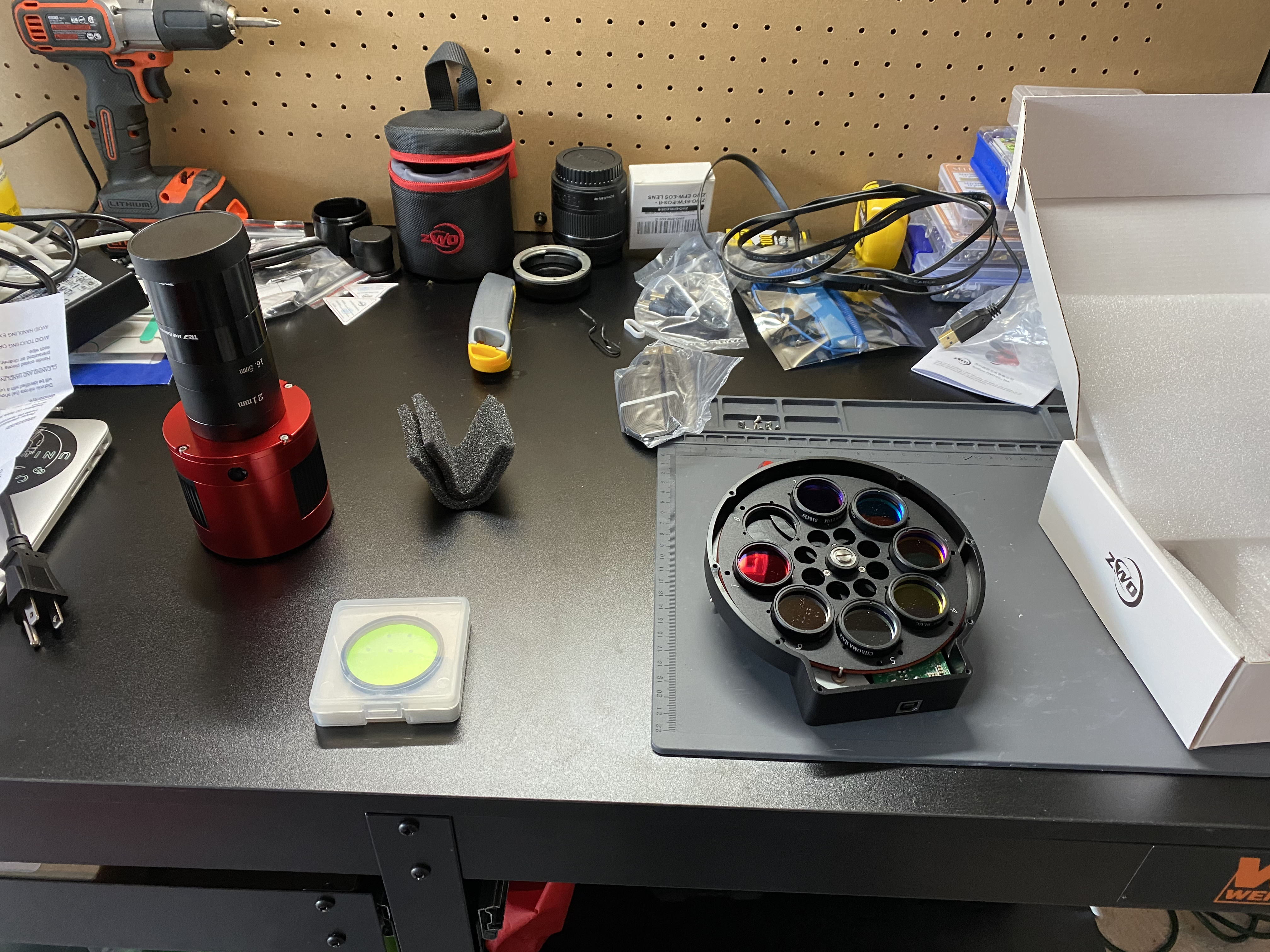
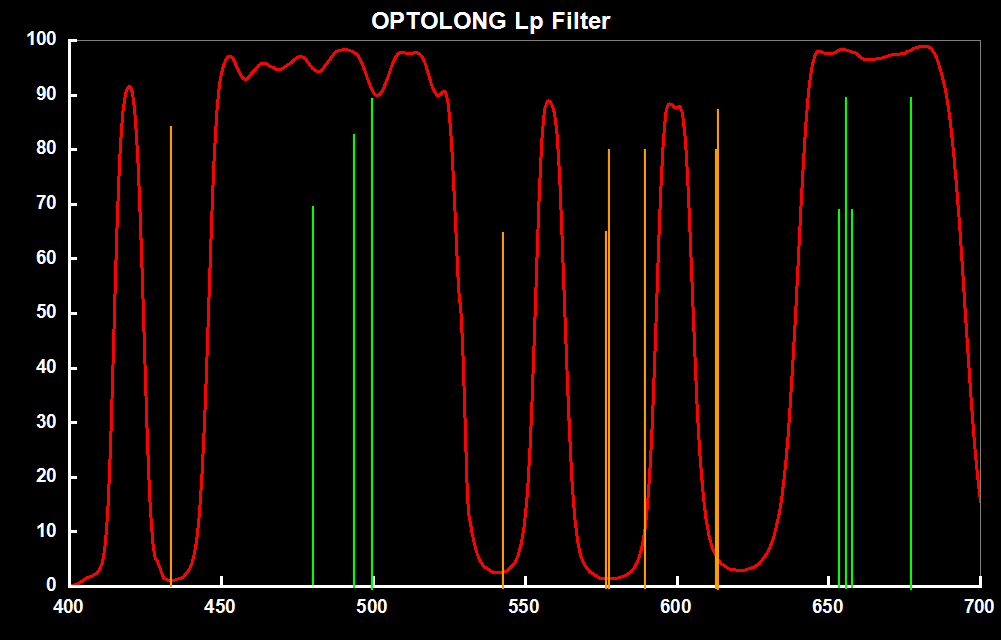
Optolong L-Pro wavelength guide